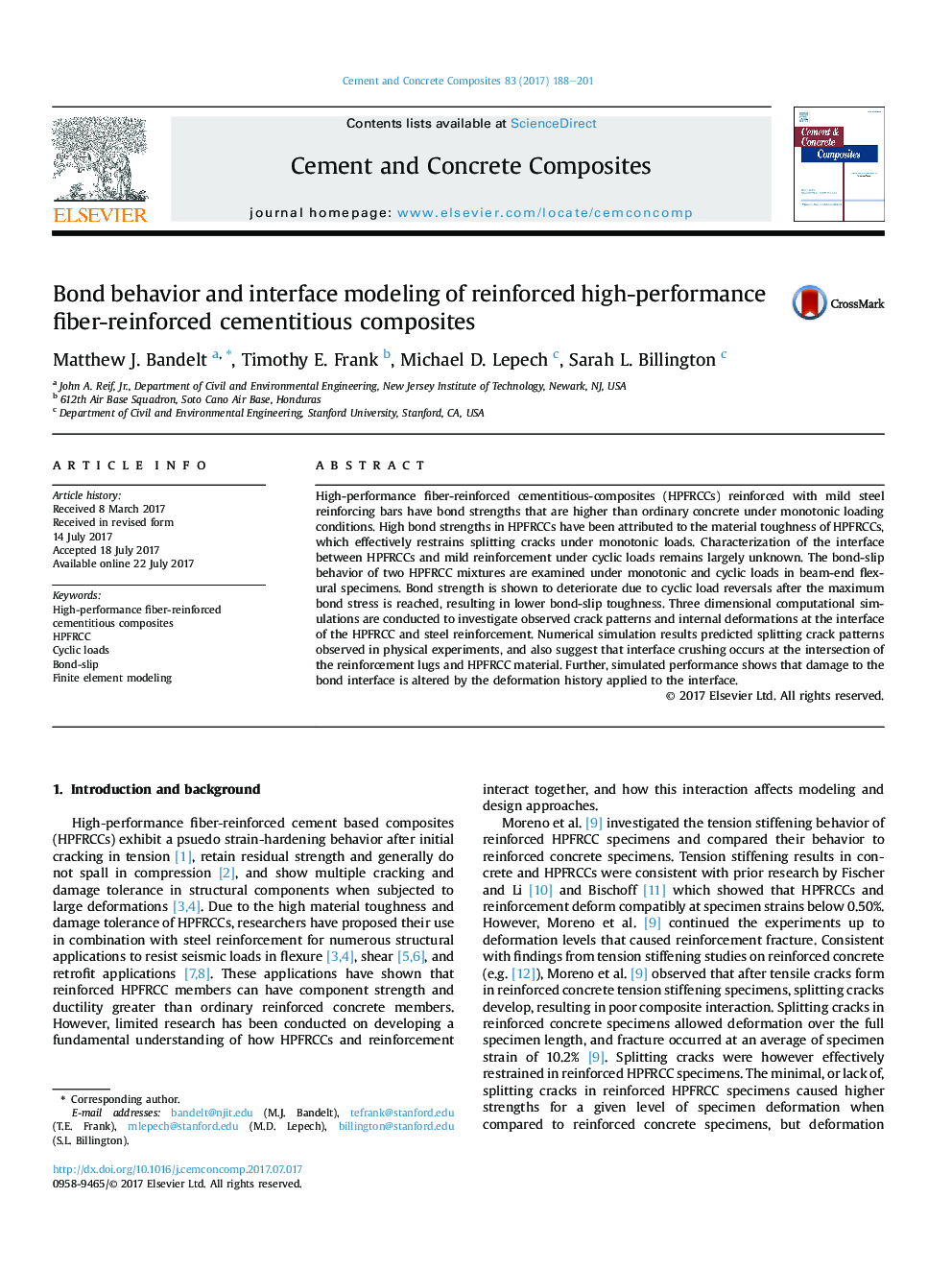| Article ID | Journal | Published Year | Pages | File Type |
|---|---|---|---|---|
| 5436811 | Cement and Concrete Composites | 2017 | 14 Pages |
Abstract
High-performance fiber-reinforced cementitious-composites (HPFRCCs) reinforced with mild steel reinforcing bars have bond strengths that are higher than ordinary concrete under monotonic loading conditions. High bond strengths in HPFRCCs have been attributed to the material toughness of HPFRCCs, which effectively restrains splitting cracks under monotonic loads. Characterization of the interface between HPFRCCs and mild reinforcement under cyclic loads remains largely unknown. The bond-slip behavior of two HPFRCC mixtures are examined under monotonic and cyclic loads in beam-end flexural specimens. Bond strength is shown to deteriorate due to cyclic load reversals after the maximum bond stress is reached, resulting in lower bond-slip toughness. Three dimensional computational simulations are conducted to investigate observed crack patterns and internal deformations at the interface of the HPFRCC and steel reinforcement. Numerical simulation results predicted splitting crack patterns observed in physical experiments, and also suggest that interface crushing occurs at the intersection of the reinforcement lugs and HPFRCC material. Further, simulated performance shows that damage to the bond interface is altered by the deformation history applied to the interface.
Keywords
Related Topics
Physical Sciences and Engineering
Engineering
Industrial and Manufacturing Engineering
Authors
Matthew J. Bandelt, Timothy E. Frank, Michael D. Lepech, Sarah L. Billington,
